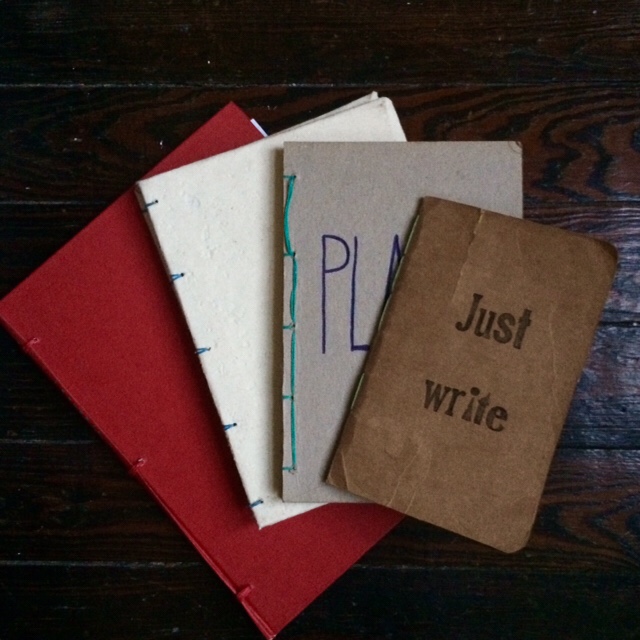
As a crafter, scholar, and zealous list maker – I use a lot of paper. I’ve never been one for special or designer notebooks, preferring to work on scrap paper and using what I have. Most of my notes are scribbled on free notepads given out at conferences (weirdly, conferences I haven’t been to… how did I get these?) and on the random last pages in school subject notebooks.
I try to avoid buying new notebooks or paper for a variety of reasons. I see a lot of paper come into my life – mail, school, flyers – that goes straight to the recycling bin. This high intake of undesirable, but free, paper makes me very unhappy about purchasing specialized paper. In my ideal world I would use the undesirable paper in a useful way. One way to inch closer to my goal is through bookbinding. I can take scrap paper and transform it into a bound book with a clear use (something like grocery lists or sewing plans). Hooray for upcycling!
So far I have three self-bound books and a low-key note pads. The note pads- made from cardboard and small pieces of scrap paper – were my intro into bookbinding. Once I felt comfortable with the basic techniques I moved on to what I saw as more challenging: hardcover books.
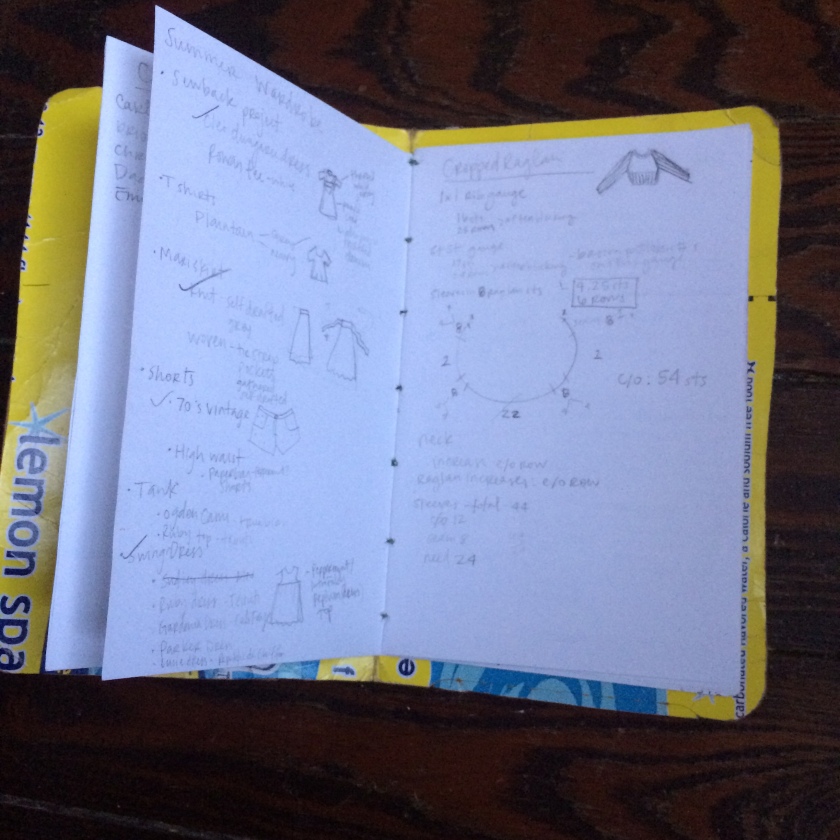
I made this little cardboard notebook at a Perennial ReMake event in partnership with a local St Louis print store. We screen-printed our notebook covers with old typeface – so cool! I used a pretty basic binding stitch – here’s a close tutorial I found online (though I can’t find the original source).
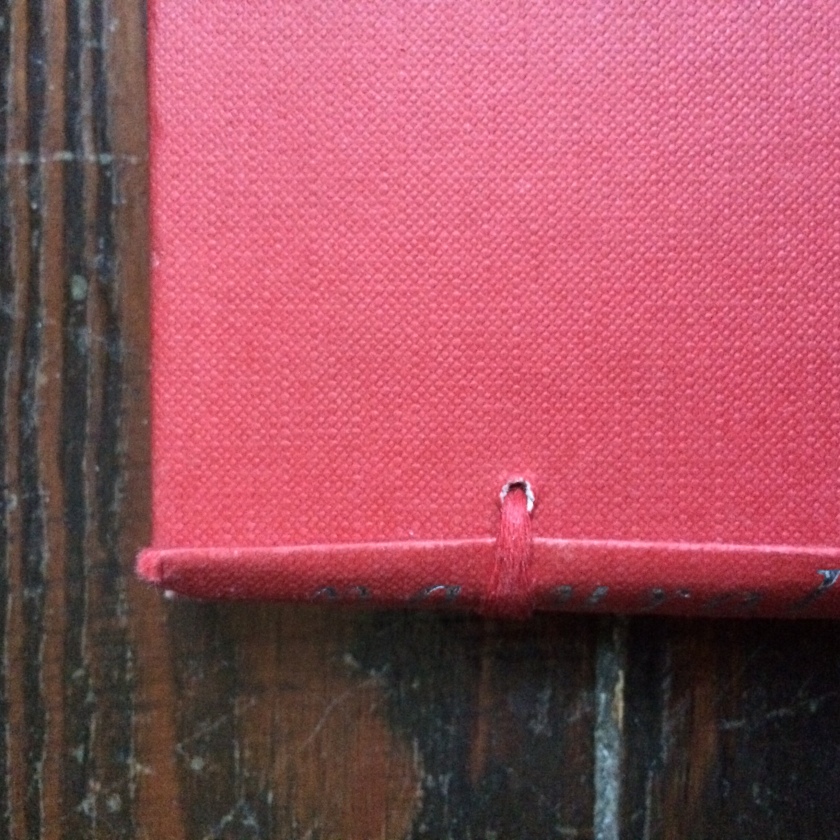
My first book was pretty basic – perhaps not at all skilled. The red book holds graph paper used for sketching knitting designs and patterns. It’s been essential for my log cabin skirt. I had a stash of loose leaf graph paper, which was already three hole punched. I approached binding this very simply – by emulating a three ring binder. Using an awl, I punched three holes through an old hardback book cover (with original pages removed). With wax covered embroidery thread, I sewed through the cover holes and the graph paper holes several times. So simple.
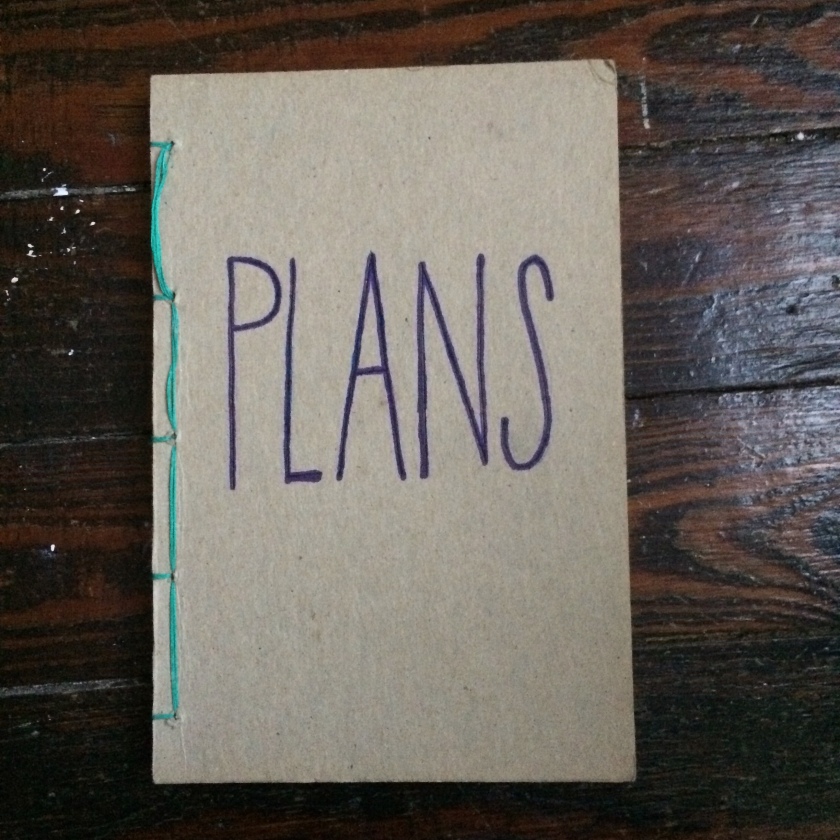
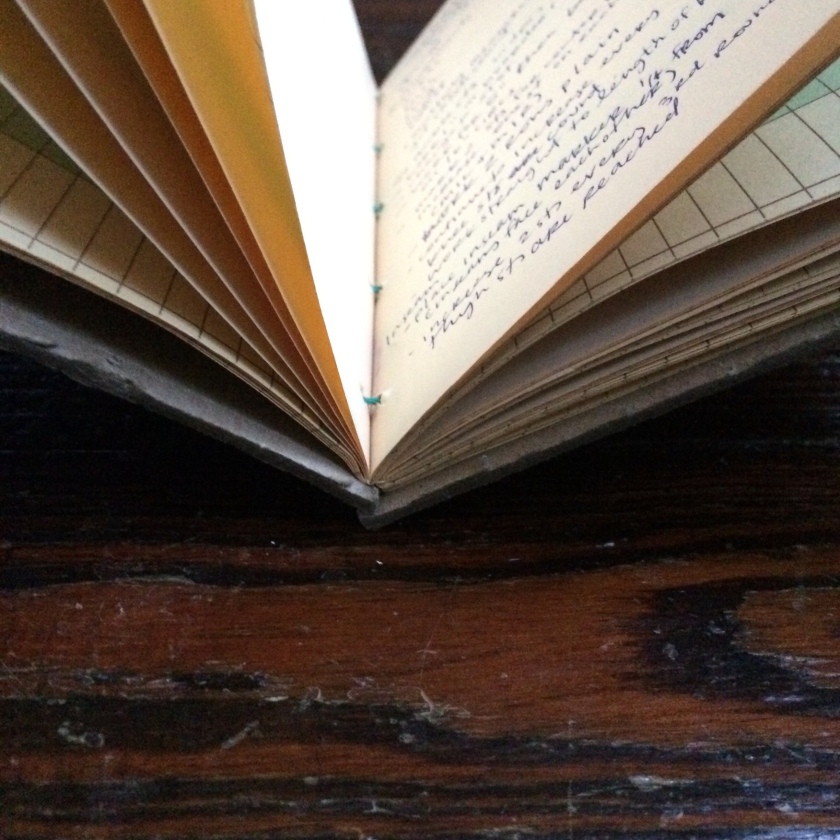
The second book was a bit of a failure. I planned to use this book for general note taking and craft planning – however the scrap paper I used is not very amenable to pencils or erasers. I tried to use a more traditional basic bookbinding stitch for this notebook – but instead of punching holes in the middle of the folded crease of the signatures (mine were groups of five sheets of paper folded in half) I accidentally punched holes through both layers of the signature. This book doesn’t close or open very well, which makes it a very impractical book. Despite it’s imperfections, I’m trying my best to fill up this notebook with knitting and sewing plans before I crack open a new one.
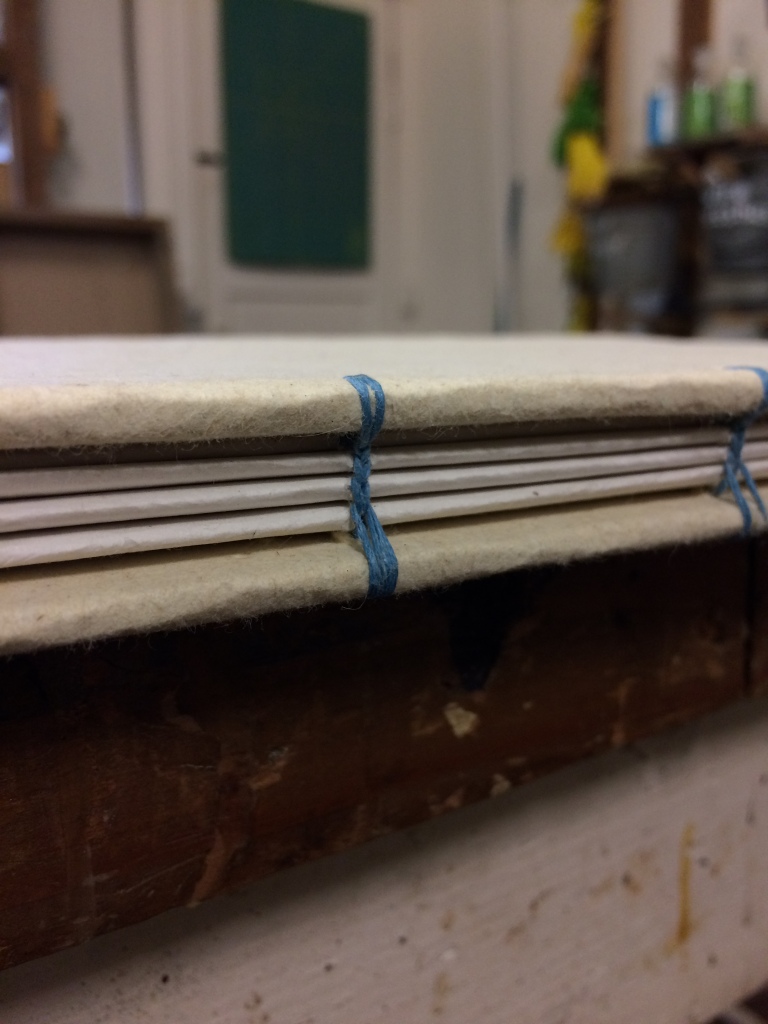
After the failure of my second book, I realized I was not ready to branch out completely on my own in the book binding world. For my third notebook I followed this tutorial on Coptic bookbinding. I found the pictures incredibly helpful, and managed create a functioning hard back book.
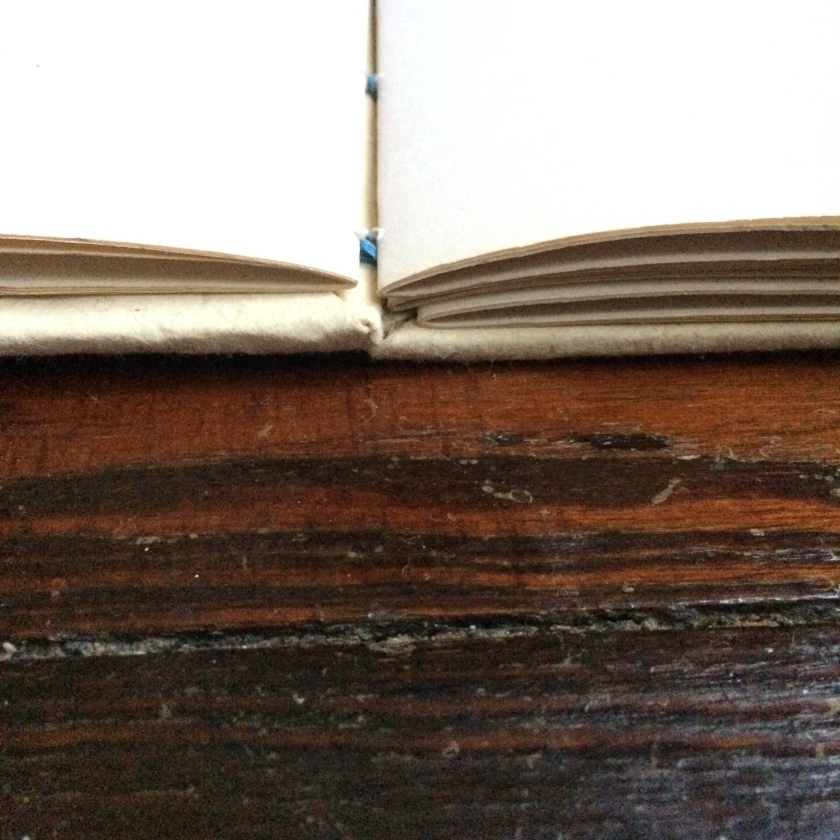
The tutorial I used doesn’t have a materials list so here’s a list of the materials I used for my Coptic bound book:
- Sketchbook paper – 8 x 11.5 in
- An old children’s book cover – 5 x 9 in. with the spine cut off
- Handmade paper – 2 sheets about 8 x 11.5 in (to cover old book)
- Embroidery floss
- Wax
- Hooked needle
- Bonefolder (or a ruler)
- Awl
- Ruler
- PVA glue (more on glue for bookbinding here)
I am quite proud of this book, but it still doesn’t have a specific purpose. The handmade paper cover doesn’t lend itself to utilitarian use like grocery or to do lists. I’m considering using this book as my natural dye book? Or perhaps my journal once this current one is full – however my current journal has been in use for four years now… and I’m only halfway… so that seems unlikely. I have a feeling this book will call out to me when it’s ready to be used.
